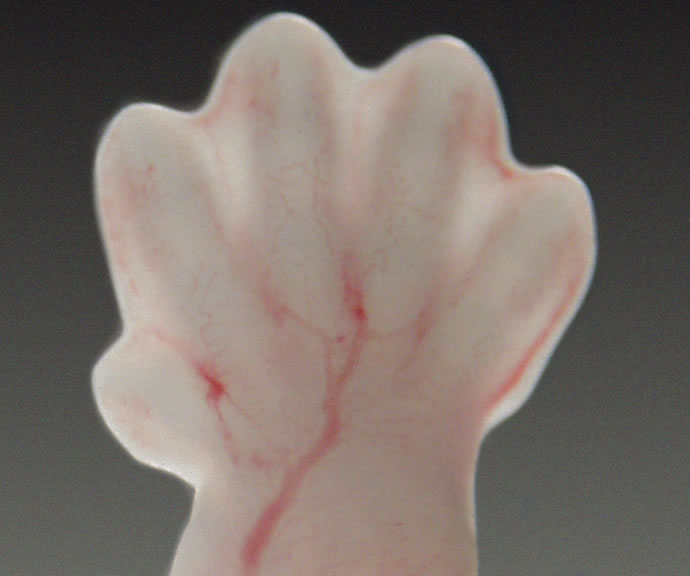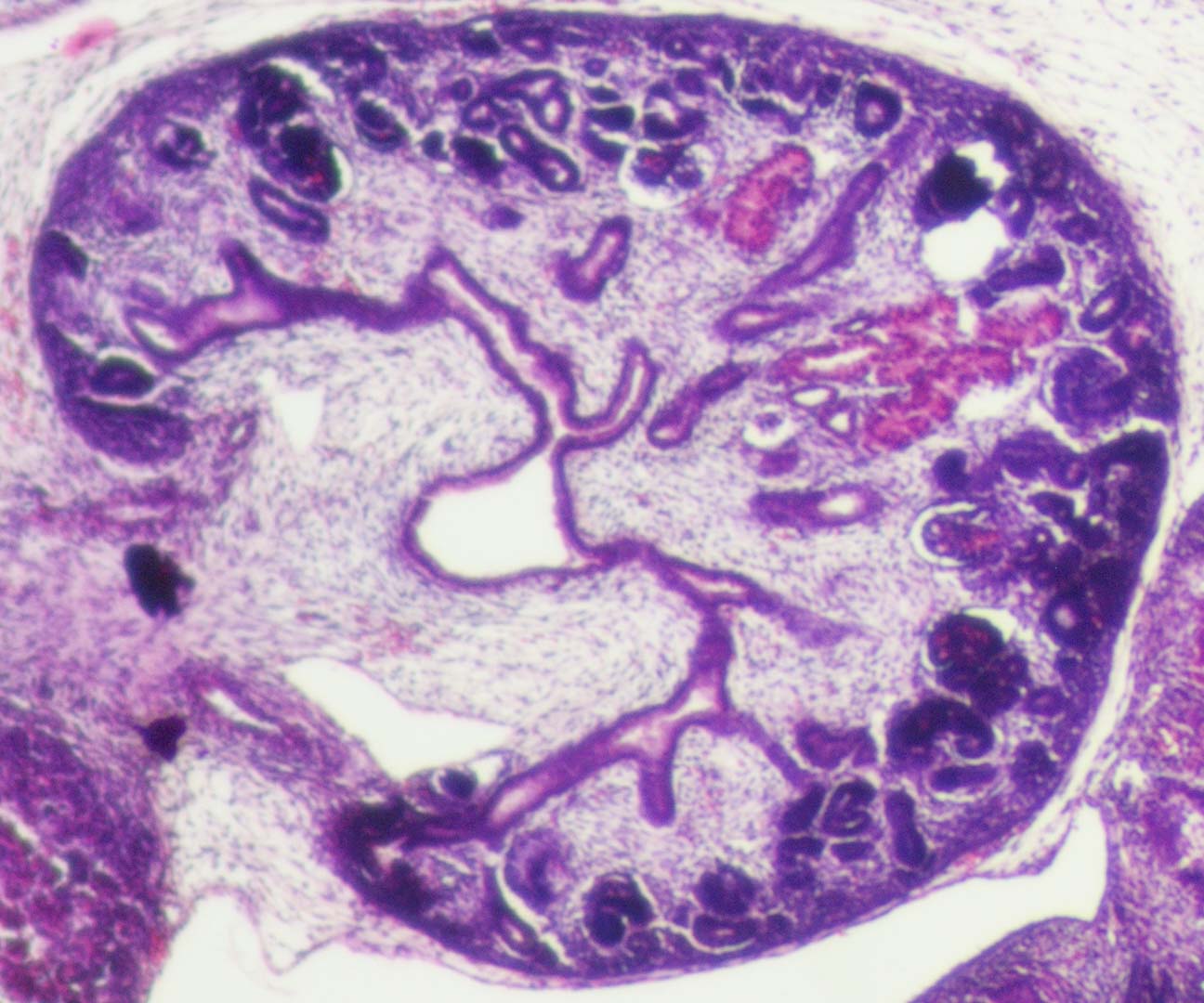Canine Embryonic Atlas
The dog is a great companion animal and researchers and clinicians alike want to help produce healthy dogs, and particularly healthy puppies. Unfortunately, we know very little about the genetic control of canine embryonic development or the timing of organ development. As a result, we do not actually know at what ages the canine embryo is likely to be detrimentally affected, for example, by common therapeutic drugs that might be administered during pregnancy.
One of the purposes of producing the Canine Atlas is to provide accurate information about the normal developmental events that occur during canine gestation and when they occur. With such information, we can identify which genes and gene pathways are important for the development of major organs and the critical periods during gestation that these genes must act. This is of critical importance if we are to understand which mutations are causing deleterious and lethal disorders in dogs.
Explore by...

Stage
If you have a specimen of unknown developmental stage or gestational age, it can be compared to digital photos in the Atlas. In such a case, scanning the Stage Pages would likely be the most useful way to determine whether the developmental stage is within the CfS 14-23 stages.

Organ
To find a particular developmental event that occurs in a specific organ, visitors might find it useful to scan the Organ Pages: Whole embryo, Forelimb & Hindlimb, Heart, Lungs, Head, Eye, Liver, Kidney, and Urogenital system.
Embryos were collected by Vicki Meyers-Wallen, Baker Institute for Animal Health, Cornell University. RNA-seq data from canine embryonic gonads (Meyers-Wallen, PLOS One, 2017) are deposited in GEO at https://www.ncbi.nlm.nih.gov/geo/query/acc.cgi?acc=GSE92283. PRO-seq data from canine embryonic gonads (Meyers-Wallen, PLOS One, 2017) are accessible at GEO https://www.ncbi.nlm.nih.gov/geo/query/acc.cgi?acc=GSE92318.
RNA-seq on other organs was performed at the Broad Institute (NIH R24, Elinor Karlsson). https://www.broadinstitute.org/canine-genetic-resources-r24. Transcripts are expected to be entered as an annotation on the Canine Genome Browser at UCSC. http://genome.ucsc.edu. A search of the NCBI website, GEO datasets, using “canine embryo” may also be useful to locate the data. https://www.ncbi.nlm.nih.gov/


